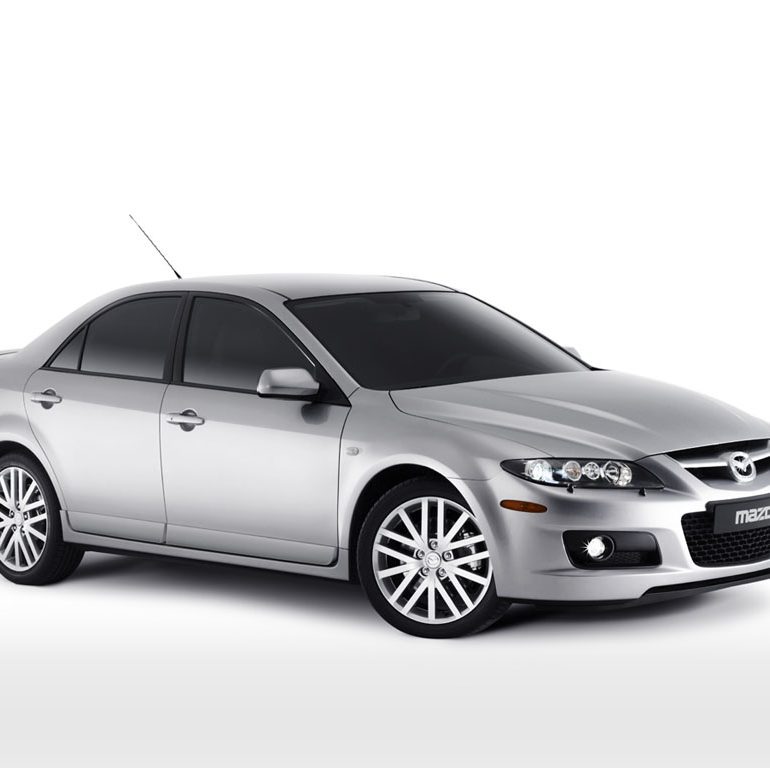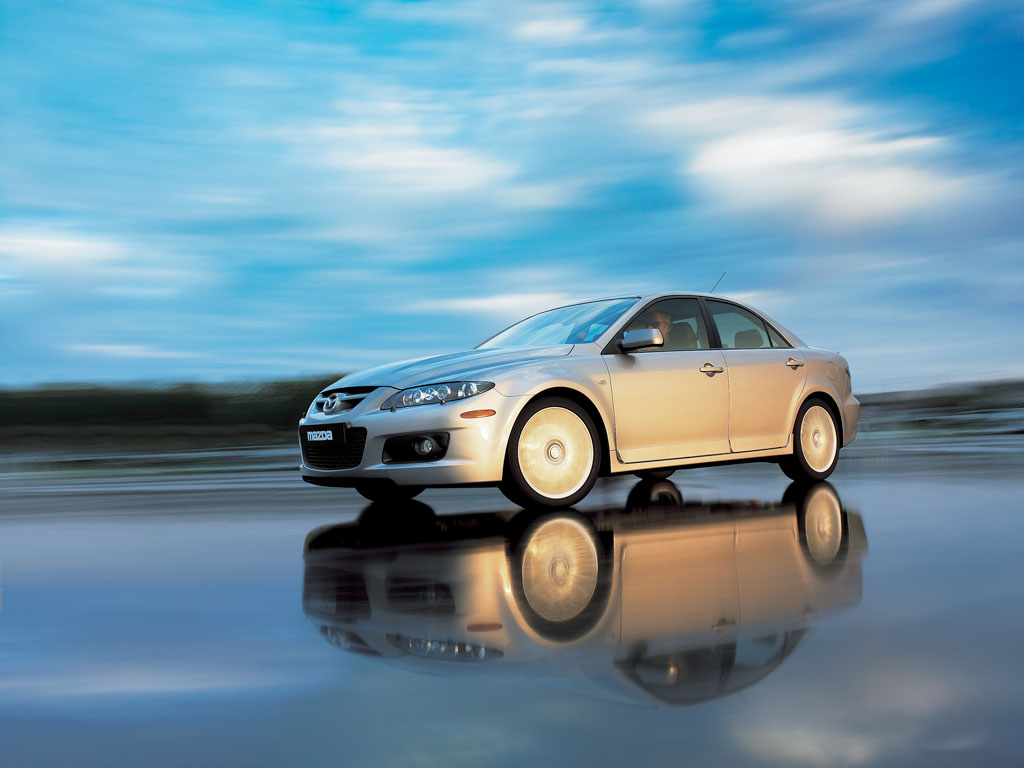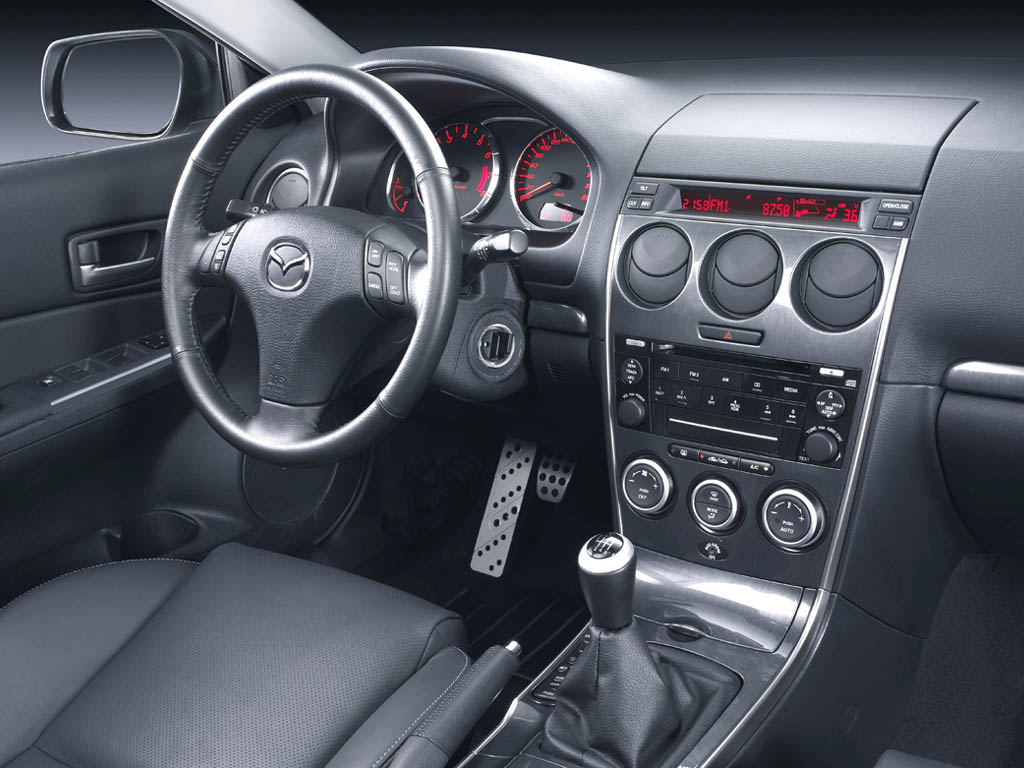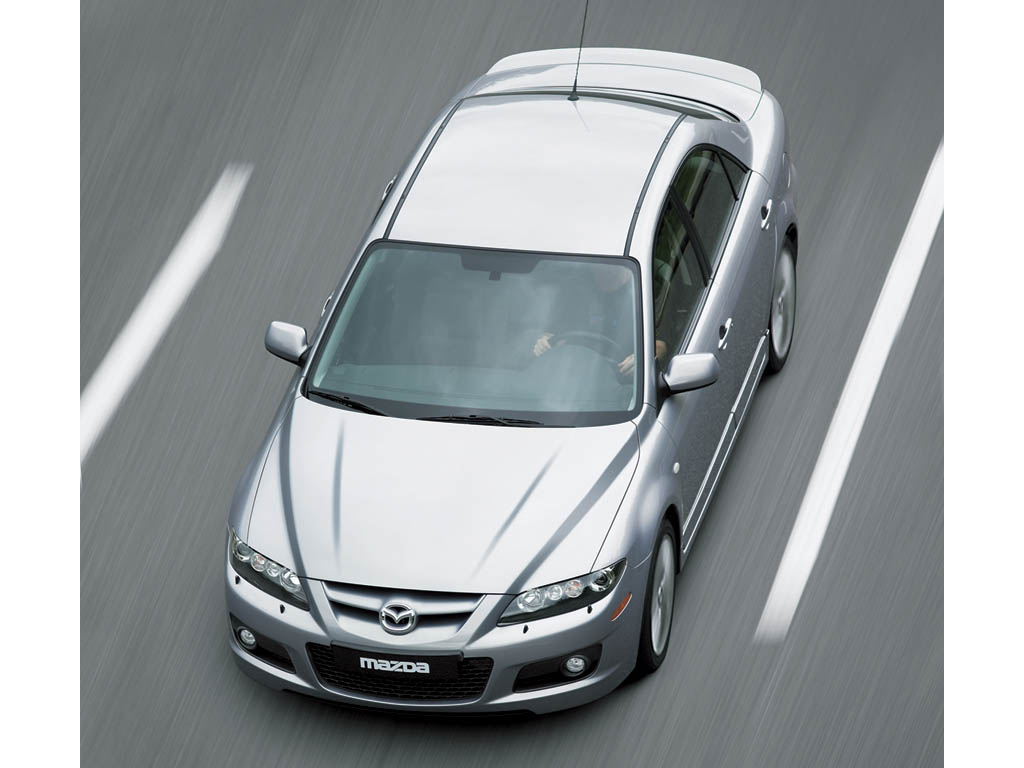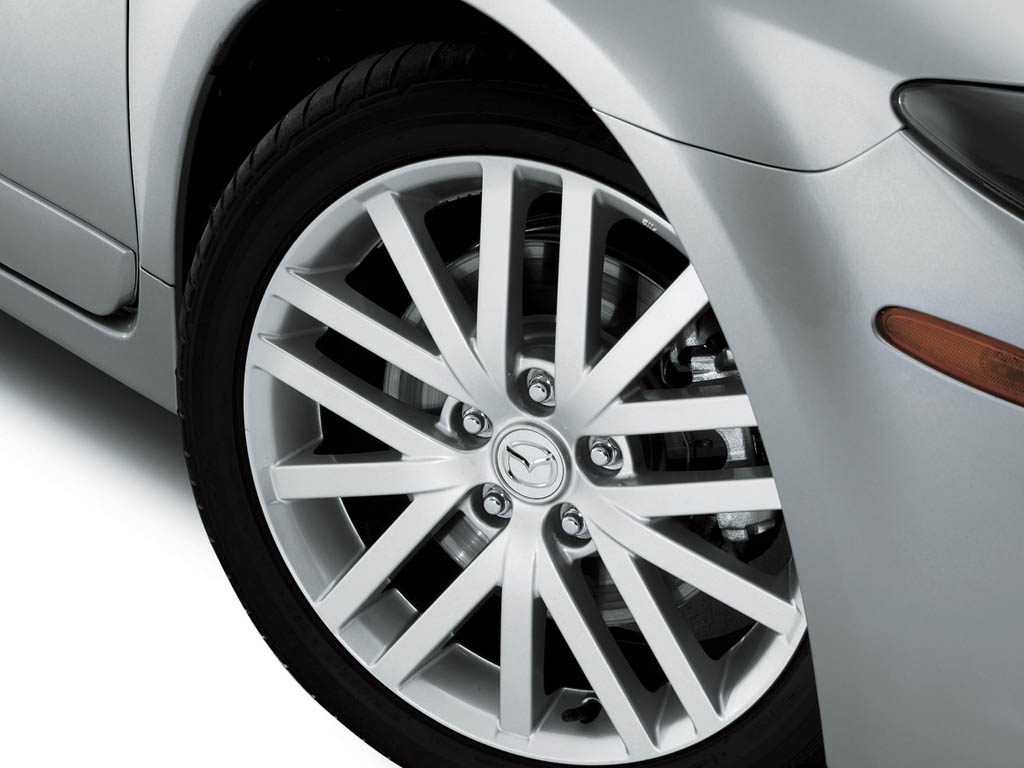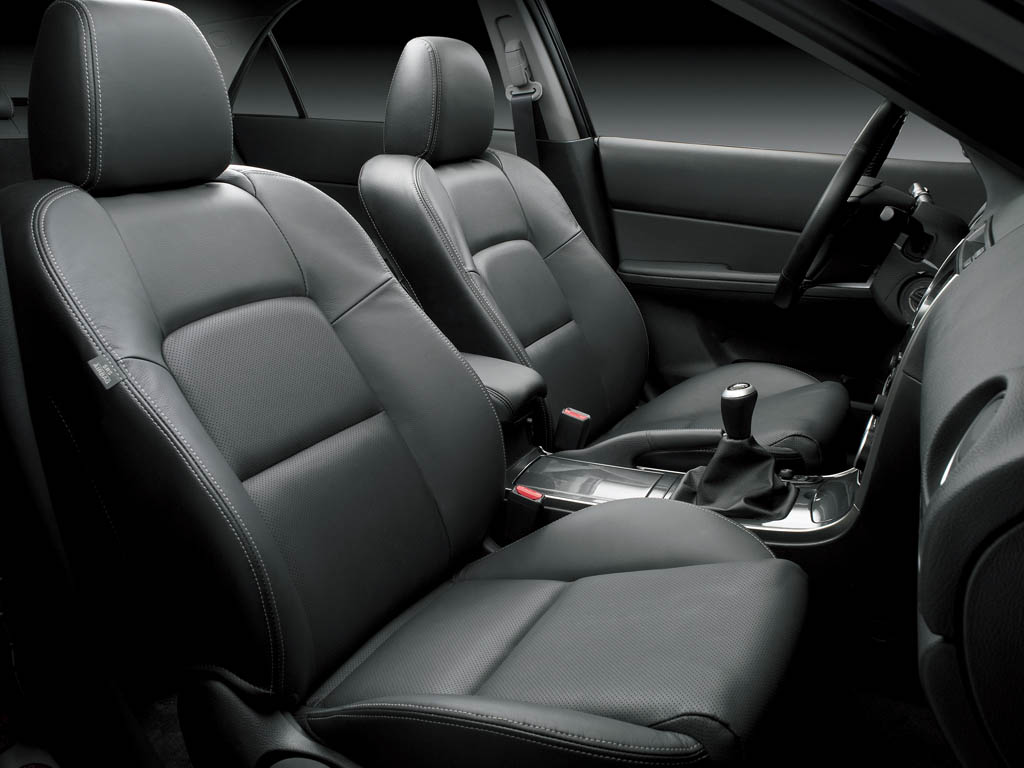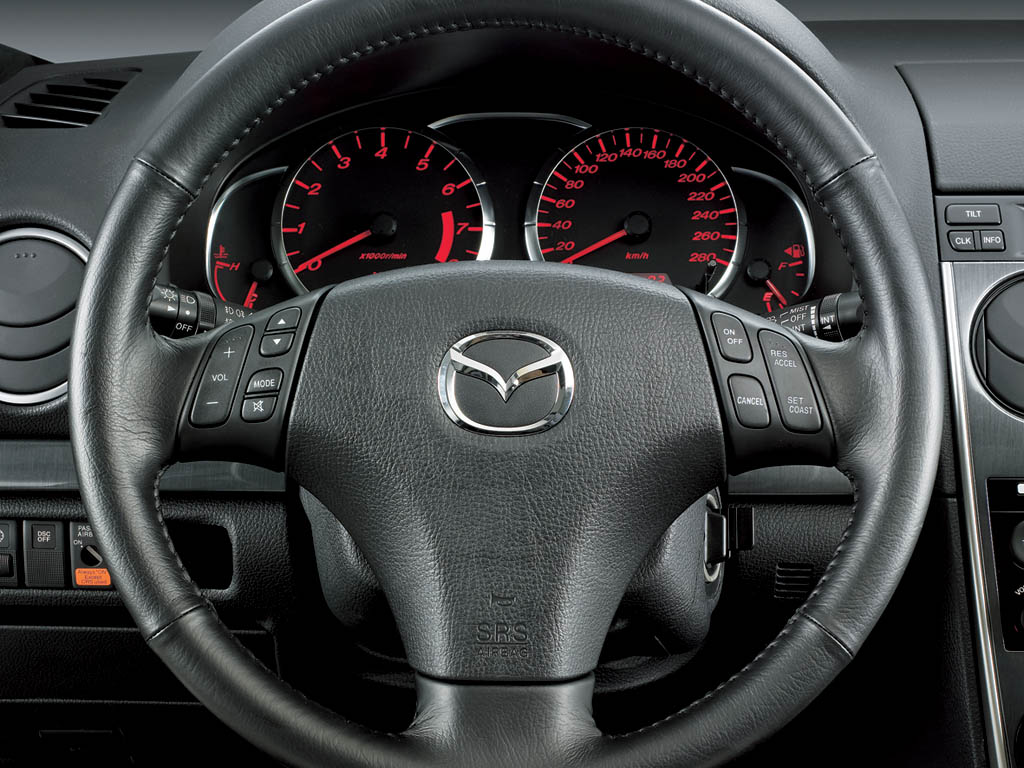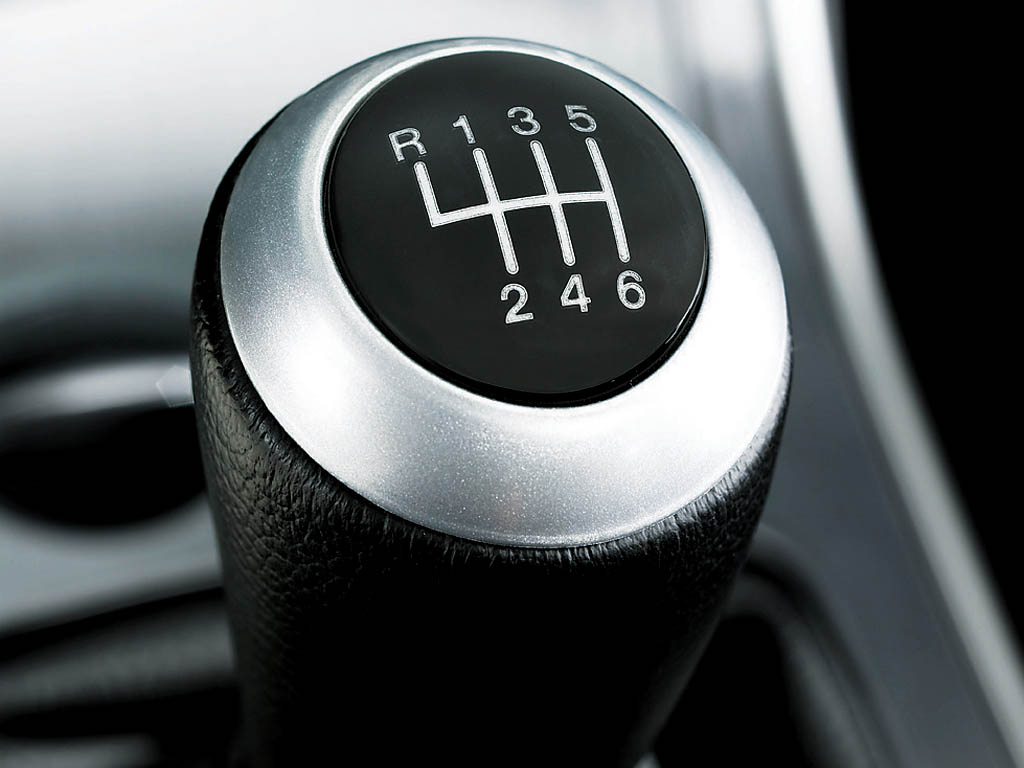2005 Mazda 6 MPS
Mazda revealed the Mazda6 MPS Concept to the world at the 2002 Paris Motor Show as a sophisticated high-performance saloon that promised the ultimate experience, both in terms of driving pleasure and design appreciation. Mazda has devoted the past two years to refining the design and technologies of this vehicle to fulfil that promise.
At the 2004 Paris Motor Show, Mazda officially unveils the production model due to start production in early 2005. The global launch of the highest performing, best handling saloon Mazda has ever built will bring the same level of ultimate Mazda6 performance to all major markets around the world, even though the product name may vary in respective regions.
Presented in Paris as the Mazda6 MPS, the new model will carry this name for European markets, Australia and New Zealand, while adopting Mazdaspeed6 in North America and Mazdaspeed Atenza in Japan.
Mazda’s Top Performing Saloon
Mazda’s own innovative technologies, including the newly developed direct-injection turbocharged 2.3-litre engine with maximum output of an estimated 260ps and all-new Active Torque Split All-Wheel Drive system, make the Mazda6 MPS the company’s highest performance saloon. Additionally, particular attention was paid to developing the stiffness of body assemblies, suspension characteristics and brake performance to match the car’s high power.
The lines of the Mazda6 are further accentuated in the Mazda MPS to create a look that conveys the vehicle’s performance and solidity. Exterior highlights include:
-A smooth yet powerful line that flows along the deep bonnet from the upper grille -The aerodynamic form of the front bumper and lower grille -A five-point upper grille section that also serves as the air intake for the engine’s intercooler -Flared side skirts and wheel arches that highlight the custom 18-inch aluminium wheels -An new rear bumper with built-in diffuser for the integrated exhaust tailpipe -compact rear spoiler
Starting with a cabin design that comfortably seats four adults, the design goal of the Mazda6 MPS was to create an environment that encourages communication between the driver and passengers. Interior highlights include:
-An instrument panel designed to be sporty, yet not overstated and that presents a quiet, calming presence in the cabin -Trim materials chosen to enrich the interior with an appealing, quality look -High performance detailing – custom six-speed manual transmission shift knob designed by performing repeated road testing, and semi-bucket front seats that vastly improve side support
MZR 2.3 DISI TURBO
The direct-injection turbocharged 2.3-litre engine was newly developed to create high output, ample low-end to mid-range torque with linear torque characteristics, as well as improved fuel economy and reduced exhaust emissions. The combination of direct injection and the turbocharger provides ample torque in the low and mid range where conventional turbocharged engines are considered weak.
The direct injection system makes effective boost possible from low to high speeds using a single-scroll turbocharger, which is lightweight and simple in construction. The thermal capacity of the exhaust system is thereby greatly reduced, minimising the decrease in temperature of exhaust gases to help comply with strict emission regulations.
The internal cooling effect within the combustion chamber improves anti-knock characteristics and improves the engine’s fuel economy without losing low-end torque, even running at a high compression ratio. The MZR 2.3 DISI TURBO engine can therefore adopt the relatively high compression ratio for a turbo engine of 9.5:1 to contribute to improved fuel economy.
The cylinder block and cylinder head are made using a new implementation of the Advanced Precision Mazda Casting process, which increases their strength. In addition, cross drilling between the block liners and between the valve bridges on the cylinder head improves resistance to heat. The crankshaft and connecting rods are made of steel, the diameters of the connecting pins increased, the shape of the rods optimised, full floating pistons introduced, and made to ensure that all moving parts are stronger, more rigid and more durable.
6-Speed Trans
A newly developed six-speed manual transmission provides the driver the pleasure of full control over the high power of the Mazda6 MPS, and also contributes to a quiet ride as well as fuel economy. A compact new three-shaft design made it possible to keep the overall length the same as the five-speed manual transmission.
The transmission uses a wide gear ratio setting that can fully exploit the high power of the direct-injection turbocharged engine. Sixth gear also serves as an overdrive gear that contributes to a quieter ride and better fuel economy.
Triple-cone synchronisers for first, second and third gears and a double-cone synchroniser for fourth gear ensure synchronisation timing and establish a balance between a short, responsive stroke and pleasing feel to gear shift operations.
Active Torque Split All-Wheel Drive System
The Mazda6 MPS is equipped with Mazda’s new Active Torque Split, All-Wheel Drive system. The system uses real-time input data on steering angle, yaw rate, lateral G-force and engine status to determine road surface and driving conditions. The active torque coupling mounted in front of the rear differential is electronically controlled according to this input, adjusting front/rear wheel torque distribution between 100:0 and 50:50 to deliver optimum drive power to each wheel. The result is powerful acceleration and positive handling regardless of constantly changing road conditions.
The Mazda6 MPS’s onboard computer automatically determines driving and road conditions so the driver can relax and enjoy driving. Three different modes of front/rear torque distribution are selected by the system: Normal, Sports, and Snow, (for slippery surfaces). The Power Take Off (PTO) system that aggressively distributes torque to the rear axle is fitted with its own water-cooled cooling system.
A new rear differential with greater torque capacity is employed by the system to deliver a high level of reliability. Increased torsional rigidity of the propeller shaft and rear differential mount improves the response of torque transfer to the rear wheels and delivers a more rigid feel to the ride under acceleration. A limited slip differential is used in the rear differential to encourage transfer of torque to the left and right rear wheels with solid traction and linear vehicle control that delivers a stable ride when cornering.
Chassis
Along with adding rigidity to parts of the body, the suspension and brakes were tuned to improve performance and to support the high power of the Mazda6 MPS.
Changes to the front double-wishbone suspension include increased damping force for the dampers, a 25 per cent higher spring rate for the coil springs, and an increase from 23mm to 24mm in the diameter of the stabiliser bar. The performance characteristics of the lower arm bushings have also been improved. In addition, the changes to the perimeter frame that result in greater torsional rigidity help improve the support stiffness of the suspension.
The multi-link rear suspension employs mono-tube dampers that feature superior response with smooth transitions between extension and compression, improving damping characteristics. The spring rate of the rear coils have been increased by 37 per cent, the stabiliser diameter increased from 21mm to 23mm, and the rear cross-member reinforced to support the higher power output of the Mazda6 MPS.
Both the front and rear are fitted with large-diameter 17-inch brake discs to support the high power output and delivering stable braking performance. The brakes work in synergy with the four-wheel anti-lock braking system (ABS), brake assist, Dynamic Stability Control (DSC) and Active Torque Split, All-Wheel Drive system to deliver outstanding levels of active safety.
Story by Mazda Motor Corp, edited by Supercars.net
In Detail
| submitted by | Richard Owen |
| engine | MZR Direct-Injection Turbo |
| compression | 9.5:1 |
| power | 193.9 kw / 260.0 bhp @ 6000 rpm |
| torque | 380 nm / 280.3 ft lbs @ 3000 rpm |
| driven wheels | Active Torque Split All-Wheel Drive w/Dynamic Stability Control |
| front tires | 215/45R 18 93Y |
| rear tires | 215/45R 18 93Y |
| front brakes | Discs w/ABS |
| f brake size | x 432 mm / x 17 in |
| rear brakes | Discs w/ABS |
| r brake size | x 432 mm / x 17 in |
| front wheels | F 45.7 x 17.8 cm / 18.0 x 7 in |
| rear wheels | R 45.7 x 17.8 cm / 18 x 7 in |
| f suspension | Double Wishbones |
| r suspension | Multi-LInk |
| wheelbase | 2675 mm / 105.3 in |
| front track | 1540 mm / 60.6 in |
| rear track | 1540 mm / 60.6 in |
| length | 4740 mm / 186.6 in |
| width | 1780 mm / 70.1 in |
| height | 1445 mm / 56.9 in |
| transmission | 6-Speed Manual |
| gear ratios | 3.538:1, 2.238:1, 1.535:1, 1.171:1, 1.085:1, 0.853:1, :1 |
| final drive | 3.611:1 |
| top speed | ~241.4 kph / 150.0 mph |
| 0 – 60 mph | ~6.5 seconds |


